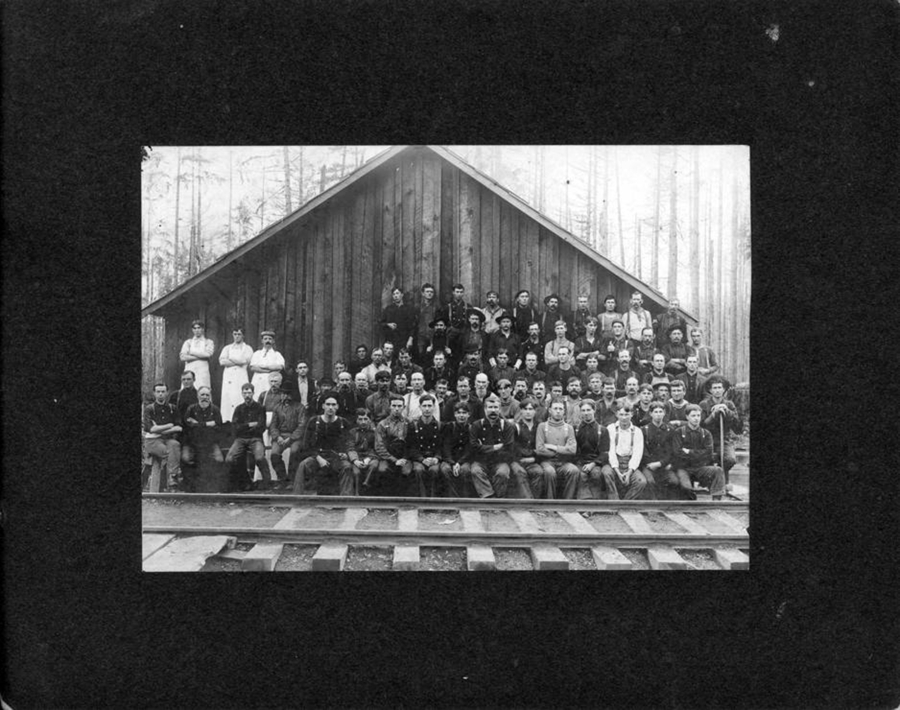The 1902 fire came close enough to blister paint on many of the Yacolt’s 15 buildings but turned north short of town. Leaves, ash and cinders swirled like a snowstorm. When the rain came days later, it cleared the air and cooled the embers. What remained of the forest was 230,000 acres of charred timber, equivalent to 10 million board.
Even burned trees have value. The burn brought Weyerhaeuser Timber Company into the area Indigenous people had called “haunted valley” but visited in the warm months to hunt and pick berries.
Before the fire, the town’s population was 50. Small-scale logging and sawmilling were its trades. The destroyed forest became known as the Yacolt Burn and presented a new problem — how to salvage the trees.
In 1901, the Northern Pacific initiated an extension of the Portland, Vancouver and Yakima Railroad ending at Yacolt. Working on this Northern Pacific project, a young surveyor, Minot Davis, left his job and joined in the timber salvage with Weyerhaeuser when the Northern Pacific work ended. He became the logging operations manager.
The railroad and the influx of loggers gave the small town a needed economic boost in 1903. A new organization was set up. Twin Falls Logging handled the salvaging, and Clark County Timber Company controlled logging, sawing, selling, transporting and rafting. Timbermen branded the logs with “W” for Weyerhaeuser and “D” for C. H. Davis, a company partner. Making daily runs, Northern Pacific trains moved the logs to Vancouver and the Columbia River for transport to other places. By the fall of 1903, logs reached the river and floated to Oregon City, Ore., and Astoria, Ore. The only sawmill ever managed by Clark County Timber was a small one for cutting ties for the railroad.
Itinerant loggers drifted in from distant places, pitched their tents, worked awhile, then mostly drifted away.
Seeing the increasingly busy town and men living in tents, businessmen saw money in saloons, hotels, restaurants and stores. Yacolt prospered from their efforts and gained a hospital and three churches. The first logging camp and the first salvage were at the Yacolt’s edge. Salvage logging ended in 1924. The last camp was known as Number 15.
The timber graveyard was mostly cedar and hemlock, big and blackened. At full fury, the blaze burned the branches off the trees. Loggers cut ground logs and felled spikes for nearly a decade. A timber measurer marked eight-foot lengths on each tree according to its diameter. Logs had to be cut to 40-foot lengths to fit on railroad flat cars. Large-diameter trees were cut into chunks that could be moved.
Logging under any conditions is dangerous, dirty work. In dry weather, black clouds rose with felled or moved trees. In wet weather, burnt logs were slippery. Sharp double-headed axes sometimes cut men. Blasting power used for stump removal inadvertently causes injuries. Draglines and donkey-engine cables frayed and broke, zinging through the air like steel snakes. Trains wrecked, and men jumped free if they could. One 70-year-old engineer, the last to jump from an impending crash, was found sitting on a stump. When asked if he was hurt, he said with a laugh “I just broke my leg.” It was his wooden leg.




